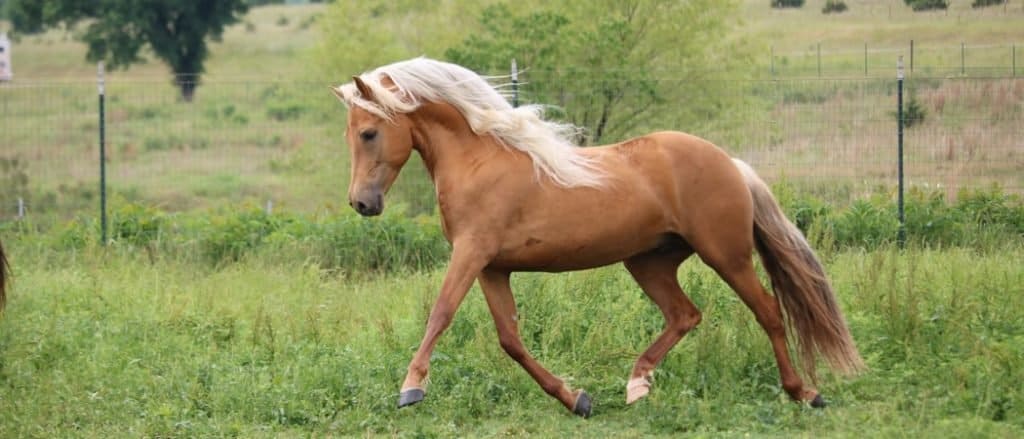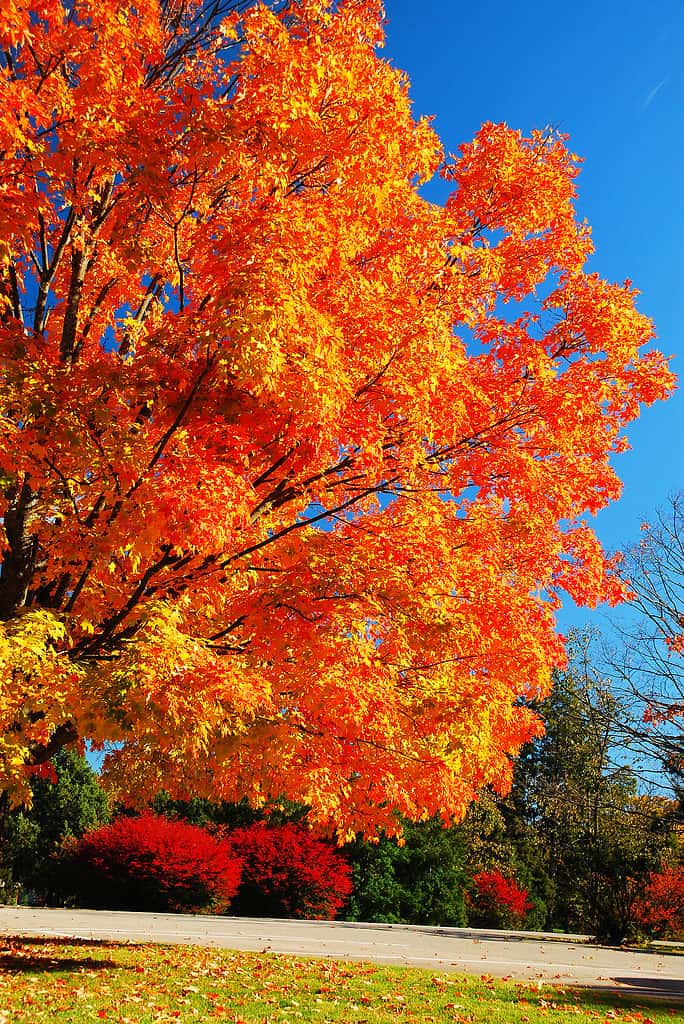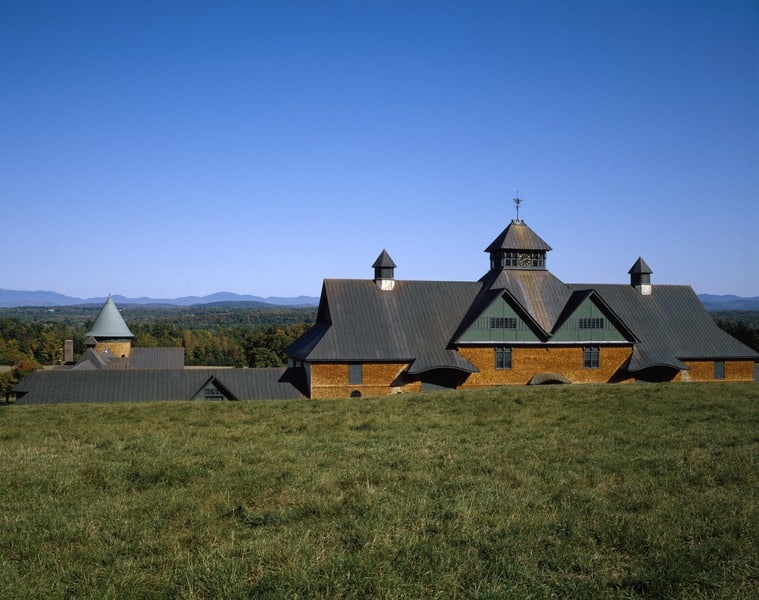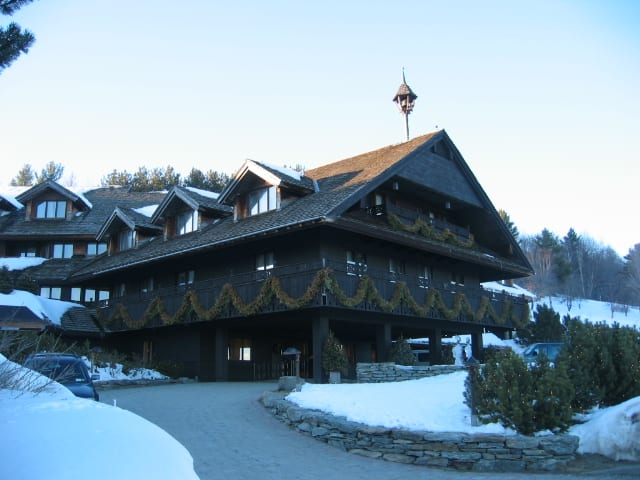Who’s in control of the future of Vermont’s landscape?
Vermont has majestic forests, ski-worthy mountains, and a plethora of covered bridges to explore. It’s become a popular tourist destination for visitors looking to enjoy the outdoors. Hiking trails, campgrounds, and breathtaking vistas are just a few of the outdoor activities available.
If residents and visitors want to keep enjoying this state’s pristine beauty, it’ll be up to the top landowners to help make that possible. Who are the big players when it comes to land ownership in Vermont? Let’s find out!
Read on to learn about the top seven landowners in Vermont.
1. Vermont Land Trust — 620,000 Acres

©Lisa Kolbenschlag/Shutterstock.com
The Vermont Land Trust, a non-profit environmental organization, oversees 620,000 acres. The Vermont Land Trust began in 1977. Its purpose is to conserve land and foster lifelong connections to the farms, forests, and natural areas that define Vermont. They’ve saved over 620,000 acres of land throughout the state. This accounts for 11% of Vermont’s total acreage!
The agency works for the common good of land and people. They collaborate with communities to conserve land. The Vermont Land Trust also supports farmers by helping them to buy land and retain land ownership. They also assist with improving the overall health of the soil, water, and air.
The Vermont Land Trust’s core values — service, trust, communication, and fairness — guide the work they do every day. They strive to bring integrity to their work by delivering high-quality services. They also build and maintain trust with the communities they serve.
Public Woodlands and Forests
Over 75% of Vermont’s land is forested, and most is privately owned. And the Vermont Land Trust protects 440,000 acres of forests. This area includes 1,400 miles of forest streams. By working with landowners to help protect forests, the Vermont Land Trust ensures a bright future for the state’s landscape!
2. Federal Government — 465,888 Acres

©Jonathan A. Mauer/Shutterstock.com
The federal government oversees 465, 888 acres in Vermont. When you combine the federal lands with the state’s public lands, there are over 800,000 acres available for the residents and visitors to enjoy. That’s 7.8% of Vermont’s total land!
Most of the federal land is managed by the Forest Service (88.1%). Next, there’s the U.S. Fish and Wildlife Service (7.3%), the Department of Defense (2.4%), and the National Park Service (2.1%). Since 1990, this land area has grown a remarkable 34.4%. This makes it an increasingly important part of Vermont’s landscape — literally and figuratively!
Green Mountain National Forest
Green Mountain National Forest (GMNF) is a majestic area that spans over 400,000 acres. This stunning area is home to diverse flora and fauna habitats. It even provides clean water resources for towns nearby. A wide variety of wildlife lives here, too, such as beaver, moose, coyote, black bear, white-tailed deer, wild turkey, and ruffed grouse.
The best part is that the Green Mountain National Forest is growing! The Trust for Public Land, a Vermont state government agency, recently facilitated the U.S. Forest Service’s purchase of three privately owned parcels. The parcels were in Pownal and Stamford and came under ownership with the help of $2.1 million in congressional funding.
This purchase is a victory for conservationists and nature lovers. It ensures that the Green Mountain National Forest will remain an essential part of Vermont’s landscape for many years. This move also helps protect the Appalachian and the Long Trail. The purchase helps to provide a buffer between these beloved hiking trails and real estate developments.
3. The Vermont Agency of Natural Resources — 350,000 Acres

©Eivor Kuchta/Shutterstock.com
The Vermont Agency of Natural Resources manages 350,000 acres of land in 200 towns across Vermont. All these state lands are managed to ensure sustainable usage and future forestry values. These public lands, whether a few acres or thousands, provide numerous benefits.
Vermont Agency of Natural Resources land benefits include:
- Wildlife Viewing
- Improved Air and Water Quality
- Recreational Opportunities
- Economic Boost
- Sustainable Development
- Nature Preservation
What They Do
The Vermont Agency of Natural Resources takes a holistic approach to land management. They help protect the public interest, provide economic benefits, and promote ecological soundness. They also work with the timber industry to ensure sustainable harvesting practices.
Vermont Agency of Natural Resources land practices include but aren’t limited to:
- Recreational Trail Maintenance
- Road Maintenance
- Commercial Timber Production
- Prescribed Fires
- Pest Control
- Invasive Plant Control
- Tree Planting
- Habitat Enhancement
- Advocating for Recreational Activities
All this takes place while preserving its forests, wildlife, and natural environment. Engaging in these activities helps keep other forests healthy and vibrant, ensuring the land is available for generations.
4. Pleasant Valley Farms — 5,144 Acres

©James Kirkikis/Shutterstock.com
Mark and Amanda St. Pierre own Pleasant Valley Farms, the largest farm in Vermont, with 5,144 acres and over 5,000 cows. The St. Pierres take a proactive approach to land conservation and sustainability on their farm.
Their story is sweet, too, and long. It all began in the 18th century with the tapping of maple trees in their wooded pasture. Today, the farm is still famous for making the best maple syrup in Vermont. The all-natural organic maple syrup comes directly from trees on their farm. Now that’s sweet!
Since 2006, the St. Pierres have used renewable energy derived from their cows’ manure to power their sugarhouse. In fact, they were the second farm to use a methane digester in the state. The digester converts the manure to methane, which is “piped away” to two fuel generators. They generate so much energy that they’re able to sell what they don’t use to the electric company! What remains from the manure is a soft, odorless mulch that the farmers use as bedding for their cows instead of sawdust.
5. Shelburne Farms — 3,800 Acres

©Carol M. Highsmith, Public domain, via Wikimedia Commons – License
Shelburne Farms cover 3,800 acres in Vermont. And the land that makes up Shelburne Farms has a deep and rich history. It all began 2.6 million years ago when glaciers moved across the landscape, forming its unique terrain. Evidence of human life in the Champlain Valley stretches back 12,000 years to the Abenaki people, who were the original inhabitants of this area.
In the late 18th century, Europeans settled in the Champlain Valley and soon after cleared the land for farming and development. By 1840, Shelburne was a bustling town with farms producing fruit and grain crops. In 1886, Dr. William Seward Webb purchased what is now known as Shelburne Farms. He proceeded to combine 32 of the farms into a 3,800-acre agricultural estate.
However, things began to change. As a result of rising financial pressures, the family had to move away from maintaining the main house and barns. By the 1950s, the focus was all on raising dairy and beef animals. This proved to be a successful venture.
In 1972, Webb’s descendants decided to open and share Shelburne Farms with the world and give it a new purpose. In 1984 the family contributed the property to the nonprofit educational organization that owns it today. If you’re ever in the area, be sure to attend one of their educational events about sustainable living! You’ll learn something new and get to see a gorgeous location.
6. Dubois Farm — 3,100 Acres
The Dubois Farm has been a mainstay in Addison County since the early 1900s. It is one of the largest farms in Vermont, with 3,100 acres and roughly 2,700 cows. After over a year on the market, however, the farm has yet to find a buyer.
This raises questions about the evolution of Vermont’s struggling dairy sector. What will happen with the land when it is sold? Will the use of the land change? Will big farms be broken into smaller parcels?
The farm has multiple buildings and residences that range in age from approximately the 1850s to 2010. The location’s easily accessible has a lot of potential for the right buyer.
7. Von Trapp Family House — 2,500 Acres

©Dudesleeper at English Wikipedia, CC BY-SA 3.0 <https://ift.tt/23YsiPw>, via Wikimedia Commons – License
Last, we have a famous location on our list of the top landowners in Vermont. The Von Trapp family’s property includes 2,500 acres of gorgeous landscape. At 76, Johannes von Trapp proudly runs the renowned Trapp Family Lodge near Stowe, Vermont. He’s the oldest son of Maria and Baron Georg Johannes von Trapp.
Back in the 1940s, the family was on tour in the United States. They toured as the “Trapp Family Singers” before settling in Stowe. In 1950, they began welcoming guests to a rustic 27-room family home/lodge. After a destructive fire in 1980, it was replaced by the new Trapp Family Lodge.
The new property features a stunning 96-room alpine lodge. To this day, it remains a beautiful destination for visitors worldwide. The location provides a delightful break from everyday life. There are stunning nature scenes and tasty cuisines. Guests get to enjoy delicious Austrian cuisine prepared with local ingredients.
The Von Trapp Family are also dedicated stewards of their land and, as such, take the utmost care to maintain their property and preserve the surrounding forest. Their commitment to conservation is evident in all facets of the lodge. For example, they serve locally sourced ingredients in their restaurant. You’ll also find energy-efficient practices implemented throughout the entire property.
Final Thoughts: Top Landowners in Vermont
Now you know about the top landowners in Vermont! There are a lot of trees in this state, with 75% of the land covered in forests. Most of this land is privately owned, and families and agencies often work together to care for these woodlands. Vermont works hard to support its woodland owners, helping them take the best possible care of the environment. Together, they have a huge responsibility, and they work as a team to keep the beautiful forests safe.
The Vermont Land Trust is a leader in conservation, which collaborates with communities to conserve land, supports farmers to help them buy and retain land, and assists with improving the health of soil, water, and air. There’s also the Agency of Natural Resources, which is committed to providing access to public lands for all Vermonters.
There are a few top private landowners worth mentioning too. Pleasant Valley Farms oversees over 5,144 acres, Shelburne Farm manages 3,800 acres, and Dubois Farm is home to 3,100. The most famous private acreage in New England is the Von Trapp Family House, with 2,500 acres.
And, of course, we can’t forget about the role the federal government plays, with the Green Mountain National Forest and Finger Lakes National Forest bringing stunning wildlife, plants, and scenery to the area.
So when you’re in Vermont, take a moment to recognize all of these incredible efforts that go into protecting this beautiful landscape. To learn more about the state, check out the articles below!
Up Next
- Discover the 12 Biggest Lakes in Vermont
- Discover the 9 Best National and State Parks in Vermont
- 5 of the Biggest Spiders in Vermont
The post Meet The 7 Largest Landowners In Vermont appeared first on AZ Animals.
from Animal News, Facts, Rankings, and More! - AZ Animals https://ift.tt/flmy7b5